Mammals

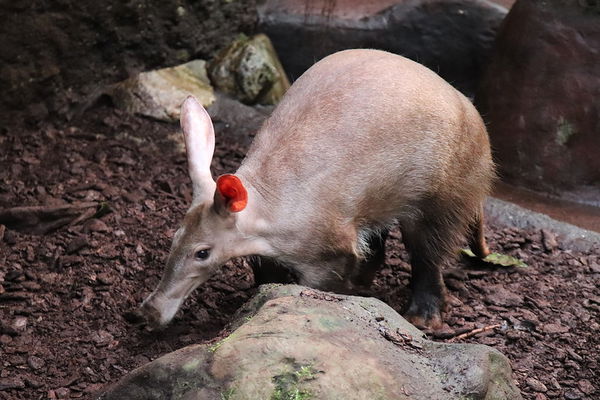
The aardvark is an African animal characterized by its long, sharp snout, which it uses to search for insects and small invertebrates in the ground. It is also known for its tough, scaly fur, which protects it from attacks by predators. The aardvark is a solitary and nocturnal animal that feeds primarily on ants and termites.
Although the aardvark is a harmless animal to humans, it is considered vulnerable due to habitat degradation and poaching. Humans often hunt the aardvark for its meat, skin, and claws, which are used in amulets and jewelry.

Photo: Pixabay
Addax (Addax nasomaculatus) is a critically endangered species of antelope. It is sometimes known as the White Antelope due to its unique white-gray coat which helps it blend in with its sandy desert home. Addax prefer to live in arid desert regions and have adapted to these harsh conditions with large, wide-hoofed feet, excellent hearing, and their peculiar white coloring which helps them stay cool during the hot days and camouflaged from predators. They are especially noted for their long horns which are twisted like those of sheep, and the males can range in length from 50 to 90 centimetres. Addax travel in small herds and feed on shrubs, grasses, and leaves which are plentiful during short rainy season. They are legally protected in some regions, unfortunately illegal hunting of the addax still persists and has caused a drastic decline in the species' numbers. Despite protection efforts, the addax population has fallen to fewer than 500 in the wild, making it an endangered species.

The alpaca is a domesticated animal that looks like a llama and is native to South America. They are known for their soft and luxurious wool, which is used to make clothing and other textile products. Alpacas are social animals that live in herds and feed on grasses and hay. Additionally, alpacas are highly adaptable and can live in both cold and hot climates.
In terms of appearance, alpacas have a long and slender neck with a small head and a friendly face. Their ears are long and pointed, and their wool can come in a variety of colors, such as white, black, brown, and grey.
Alpacas are friendly and curious animals that often approach people to investigate them. They are very easy to care for and are commonly used for wool production around the world. In summary, the alpaca is an adorable and valuable animal that has been a part of Andean culture for centuries.

The armadillo is a distinctive and peculiar animal found in Central and South America. They are known for their hard and segmented shell, which provides them with protection against predators and other dangers. Armadillos are nocturnal animals and feed on a variety of insects, as well as fruits and small animals.
In terms of appearance, armadillos have a round and short body with short and strong legs. Their shell is made up of bone plates covered in skin, which can move to allow for mobility. The fur of armadillos can range from dark brown to gray, depending on the species.
Armadillos are unique and fascinating animals that have been of interest for their appearance and behavior. They are capable of digging burrows and tunnels in the ground, making them important in soil ecology. In summary, the armadillo is an iconic and valuable animal that represents the diversity and uniqueness of wildlife in Central and South America.

Photo: Frank Vassen
The aye-aye is a nocturnal and solitary lemur found only in Madagascar. It is characterized by its long, black fur, large yellow eyes, and long, thin fingers. The aye-aye is the only primate that uses echolocation to find food, tapping on tree bark with its fingers to listen for insects inside.
Despite being a unique and fascinating animal, the aye-aye is endangered due to loss of its natural habitat and poaching. In Malagasy culture, the aye-aye is often considered a bad omen animal and is attributed with magical powers.

The baboon is a primate found in Africa and Arabia. It is characterized by a large and muscular body, elongated snout, and powerful jaws. Its fur varies in color, ranging from dark brown to gray, with the belly and lower extremities being lighter. Males have a mane around their neck and a more imposing appearance than females.
Baboons live in social groups led by a dominant female, known as the "alpha mother." They are omnivores and feed on a variety of foods, including fruits, insects, and small animals. They are also known for their ability to steal food from humans in urban areas.
Despite their intimidating appearance, baboons are very social animals and often interact through a variety of behaviors, including vocalizations and gestures.

Photo: Beeki
The badger is a stout and powerful mammal that belongs to the family Mustelidae. They are found in North America, Europe, and Asia, and are known for their distinctive black and white striped faces. Badgers have short, stocky legs and are built for digging, with strong forelimbs and long, sharp claws. They are nocturnal animals and are most active at night, spending their days in underground burrows or dens. Badgers are omnivores, feeding on a variety of foods such as small mammals, insects, fruit, and nuts. They are also known for their ability to hunt and eat venomous snakes. Despite their ferocious reputation, badgers are generally shy animals and will only attack when cornered or threatened.

The bat is a fascinating flying mammal known for its unique ability to navigate and hunt in complete darkness using echolocation. There are over 1,300 species of bats, and they come in a wide variety of sizes and colors.
They have wings that are made up of skin stretched over their elongated fingers, which allows them to fly and maneuver with incredible agility. Bats are nocturnal animals and feed on insects, fruits, and nectar.
They play an important role in pollination and insect control, making them a vital part of many ecosystems. While some people may fear bats due to their association with disease, the vast majority of bats are harmless and are not carriers of disease.

Photo: Bergadder
The bear is a large, powerful mammal found in many parts of the world, including North America, Europe, and Asia. There are several species of bear, including the grizzly bear, black bear, and polar bear. Bears are known for their strength and intelligence, and are often featured in mythology and folklore. They have a thick, shaggy coat of fur that keeps them warm in cold weather, and sharp claws and teeth for hunting and self-defense. Bears are omnivorous, and their diet consists of both plants and animals. They are important predators in many ecosystems, and help to maintain the balance of nature. However, bears are also threatened by habitat loss, hunting, and climate change.

Photo: SteveRaubenstine
The beaver is a semi-aquatic mammal known for its distinctive flat tail and its ability to build dams and lodges using sticks, mud, and rocks. Beavers are found throughout North America, Europe, and Asia, and they play an important role in their ecosystems by creating wetland habitats that support a variety of plant and animal species.
Beavers are the second-largest rodents in the world, after the capybara, and can weigh up to 70 pounds. Their fur is thick and waterproof, and they have webbed hind feet and a set of transparent eyelids that allow them to see underwater. Beavers are herbivores and primarily eat bark, twigs, and leaves from a variety of trees and shrubs.
Despite their important ecological role, beaver populations have declined in many areas due to habitat loss, hunting, and trapping. Conservation efforts are underway to protect and restore beaver populations and the wetland habitats they create.

Photo: Egor Kamelev
Beetles, also known as scarabs, are a diverse group of insects that can be found all over the world. They are easily recognized by their hard outer shell, called a carapace, which protects their wings and body.
Beetles come in many different shapes and sizes, from the tiny, colorful ladybugs to the large, intimidating rhinoceros beetles. They play important roles in ecosystems, as they are scavengers, predators, and pollinators. Some species of beetles are also used in traditional medicine and as a source of food.
Despite their importance, beetles are threatened by habitat loss, pollution, and climate change. Conservation efforts are underway to protect these insects and their habitats, including the creation of protected areas and the promotion of sustainable land use practices.

The beluga is a white whale that inhabits the Arctic regions of North America, Russia, and Europe. It is characterized by its rounded head and white color, which makes it easily recognizable. Belugas are social animals and often live in groups, interacting vocally and physically.
Despite its size, the beluga is a fast and agile swimmer and feeds on a variety of prey, including fish, crabs, squid, and octopuses.
The beluga is considered one of the most intelligent animals in the ocean, exhibiting complex behaviors such as tool use and play. Additionally, it is known for its ability to mimic human speech.
Unfortunately, the beluga population is in decline due to hunting and environmental pollution. Despite legal protections, some countries continue to hunt belugas for their meat and skin.

The bison, also known as the American buffalo, is a herbivorous mammal that once roamed much of North America. It is one of the most iconic animals of the Great Plains, and is known for its large size, thick fur, and majestic presence.
Male bison can weigh over 900 kilograms and stand over two meters tall at the shoulder. They have a large head, with a mass of curly hair on top, and their legs are short but muscular. Their fur is thick and woolly, which allows them to survive in the harsh winters of the Great Plains.
For centuries, bison were a vital source of food and materials for the Native American tribes of North America. However, their population declined drastically due to overhunting and the expansion of civilization. Today, thanks to conservation efforts, the bison population has increased, although it is still vulnerable to poaching and habitat loss.

Photo: Suus
The Border Collie dog is a breed of dog originating from the border region between England and Scotland. It is known for its intelligence, herding skills, and high energy. The Border Collie is a working breed and needs a lot of physical and mental exercise to stay healthy and happy. They are very loyal, affectionate and loving with their owners, but can be reserved with strangers.
Border Collies are a very active breed and need to have a job or task to perform. They are very intelligent and easy to train, but can be stubborn if not properly educated.
The Border Collie's coat is soft and dense, and can be various colors, such as black and white, brown and white, or tricolor.

The Boxer dog is a breed of dog originally from Germany. It is characterized by its muscular and compact body, square head, and energetic and playful temperament. Boxers are very sociable and affectionate dogs, and get along well with children and other animals.
Boxers are a working breed and need a lot of exercise and mental stimulation to stay healthy and happy. They are intelligent and easy to train, but can be stubborn and headstrong if not trained properly.
The boxer's short, shiny coat can be various colors, but the most common is brown with white markings.

The buffalo, also known as bison, is a large and heavy mammal that is primarily found in North America. There are two different species of buffalo, the American buffalo and the European buffalo. The American buffalo is the largest terrestrial mammal in North America and is primarily found in national parks and nature reserves.
The buffalo has a massive and muscular body, with a large head and short, thick horns. They are herbivores and mainly feed on grass. During mating season, male buffaloes fight for the right to mate with females. The buffalo is a very important animal in the culture of Native American people and is a symbol of strength, resilience, and freedom.
Buffaloes are very important animals for prairie ecosystems and are an indicator of the health of the land. They are often considered an endangered species due to hunting and habitat loss.
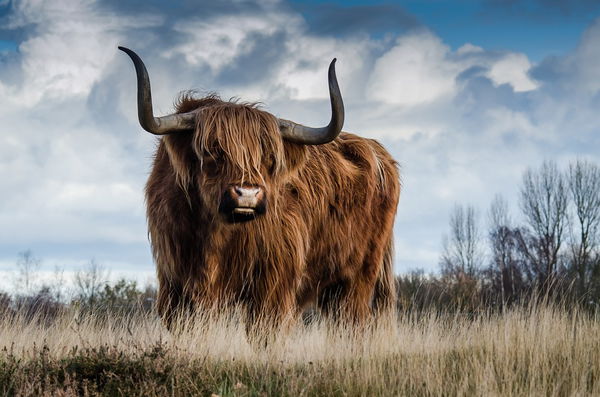
Photo: RonBerg
The bull, also known as the ox, is a herbivorous mammal belonging to the bovid family. It is one of the most important domesticated species for man, since it is used mainly in the production of meat, milk and agricultural work. The bull is characterized by its muscular and robust body, with a large head and spiral horns. They can vary in size, depending on the breed and gender, and can weigh more than 1000 kg.
Bulls are social animals and live in groups led by a dominant male. They are very resistant animals and can adapt to different climates and terrains. In addition, they have an important role in many cultures, especially in Spain and Latin America, where bullfights and related festivals are held.
However, the use of the bull in bullfights and other activities has been the subject of controversy in recent years, due to the cruelty and suffering these animals suffer in such activities. In addition, intensive livestock farming and the exploitation of bulls in the food industry have also been criticized for ethical and environmental reasons.

Photo: Pixabay
The camel is an iconic animal, easily recognized with its long neck and humps. There are two different kinds of camels, dromedary camels which have one hump and Bactrian camels which have two. Camels are living in the dry desert and are adapted to the environment with their elongated feet, humps, and thick fur. These animals can go for months without drinking water and when they do, they can drink up to 30 gallons in around 13 minutes. Camels are not just able to walk but also are able to run at up to 40-50 miles per hour. Their main source of nutrition is vegetation and they are able to eat most of the plants in their environments.
In addition to being great travelers, camels also have many other uses. They provide milk, wool, leather, and other materials that people find useful. Camels are also highly sociable, with some people believing that they have a language of their own.

Photo: Pixabay
The Capybara is the world's largest rodent which is native to South America. It is usually found near bodies of water, such as rivers, lakes, and swamps. They can be found in many grasslands, scrublands, and forests, but prefer wet areas with dense vegetation. They are semi-aquatic, which means they do well both on land and in the water. Capybaras are social animals and live in large family groups, consisting of several adults and their young. They are herbivores, and their diet consists of grasses and aquatic plants. Capybaras have thick fur which protects them from the cold or heat. Their coats can be a variety of colors, ranging from brown to yellow. They have long claws and webbed feet which help them walk on slippery surfaces and swim in the water. Capybaras are powerful swimmers and are capable of staying underwater for up to 5 minutes.

Photo: Pixabay
The caracal is a medium-sized feline found in Africa, the Middle East, and parts of Asia. It has a sleek and elegant body, short and dense reddish-brown fur, and pointed ears with tufts of black hair on the tips. They are agile and powerful hunters, capable of jumping up to 3 meters high to catch their prey.
Caracals are solitary and nocturnal animals that prefer to live in arid and mountainous regions. Their diet consists mainly of small mammals and birds, but they can also hunt larger prey such as antelopes and gazelles.
Although not an endangered species, habitat loss and poaching are threats to the caracal population. These felines are highly valued for their beauty and hunting ability, making them a target for poachers.
The cat is a small, carnivorous mammal known for its grace, agility, and independent nature. There are many different breeds of cats, each with its own distinctive appearance and personality. Cats are popular pets and are often kept indoors as house cats, although they can also be kept as outdoor pets.
They are known for their sharp claws, excellent hunting skills, and their ability to clean themselves with their tongue. Cats are also known for their playful and curious nature, and they can form strong bonds with their human caretakers.
However, cats are also known for their independent nature and can be aloof or moody at times. They are an important part of many households and have been beloved pets for thousands of years.

Photo: Pixabay
The cheetah, also known as the guepardo, is a large and powerful animal that is known for its signature long legs, spotted coat, and incredible speed. Guepardos are found in a variety of habitats, but they are most commonly found in grasslands, savannahs, and open areas of Africa. They are solitary animals, and they hunt primarily during the day, and then retreat to a den or shelter at night.
Cheetahs are opportunistic predators and they are extreme athletes, capable of reaching speeds of up to 75 miles per hour! They hunt by chasing their prey and running them down until they can no longer run away. The guepardo’s powerful claws and jaws allow them to take down even the toughest of prey.
Cheetahs are generally good-tempered animals, but they are still wild, and should be treated with caution and respect. They are also a vulnerable species, and conservationists are working to protect them from further population decline. Overall, the cheetah is an amazing and remarkable creature, and with proper conservation efforts, will be around for many years to come.

The chimpanzee is a primate that inhabits central and western Africa. They are social primates and live in groups that can be quite large. Chimpanzees have a high level of intelligence and are known to use tools to obtain food, such as twigs for fishing ants and termites, and stones for cracking nuts. Additionally, chimpanzees are capable of recognizing themselves in a mirror, suggesting a sense of self-awareness.
Chimpanzees are omnivores and feed on a wide variety of foods, including fruits, leaves, insects, and meat. In popular culture, chimpanzees are often depicted as playful and intelligent animals, but they are also endangered due to habitat destruction and poaching.

Photo: IanZA
The puma, also known as the mountain lion or cougar, is a large feline native to the Americas. They have a tawny or reddish-brown coat, and are known for their agility and strength. Pumas are solitary animals and are most active at dawn and dusk. They are apex predators, hunting a variety of prey including deer, elk, and smaller mammals. Pumas are found from southern Canada to South America, and their populations are generally stable, although they have been threatened by habitat loss and hunting in some areas. Pumas are also an important cultural symbol for many indigenous peoples in the Americas.

Photo: Pixabay
The cow is a domesticated bovine found all over the world. Their average life span is roughly seven to 15 years. Cows come in a variety of colors and sizes, but the most common color is black and white. Cows are herbivores and eat a variety of grasses and other plant material. They use their flat, wide tongues to pull food off the ground. Cows can produce up to six gallons of milk a day when they are milked. Cows are social animals and live in small herds where they have a strict hierarchy among the cows. They give off a distinct moo for communication. They form strong bonds among their herd and can form close relationships with their owners. Cows are a smart species, and are capable of learning from their environment and from people.

Photo: mali maeder
The Dalmatian is a breed of dog originating from Croatia. It is known for its distinctive white coat with black spots, although there are also varieties with brown spots. Dalmatians are large and muscular dogs, with a short and shiny coat that requires little maintenance.
Dalmatians are known for being energetic and loyal dogs. They are very sociable and enjoy the company of their family, so they need to spend time with them and receive attention. In addition, they are very active dogs and need a lot of daily exercise to stay healthy and happy.
These dogs are also known for being good with children and have traditionally been used as firehouse dogs because of their bravery and dedication. However, they can also be stubborn and obstinate in their training, so early and consistent education is important.

The deer is an ungulate animal that inhabits most continents in the world, with the exception of Antarctica and Australia. Deer are known for their majestic antlers and their ability to run at high speeds. Additionally, deer have an herbivorous diet and feed on leaves, twigs, and grass.
Deer are social animals and live in groups, known as herds, that can vary in size depending on the species. Male deer are known for their antlers, which can grow into several points and are used to attract females and to defend against predators.
Deer are symbolic animals in many cultures and are seen as symbols of strength, elegance, and freedom. Additionally, in many parts of the world they are hunted for their meat and antlers.

Photo: Storme22k
The dingo is a wild dog found primarily in Australia, although there are also small populations in Southeast Asia. They are medium-sized dogs with a lean, muscular build and short, thick fur that comes in a variety of colors. Dingoes are known for their intelligence, adaptability, and strong hunting instincts.
Dingoes are apex predators and feed on a variety of prey, including kangaroos, wallabies, and smaller mammals, as well as reptiles and birds. They are also opportunistic scavengers and will eat carrion and human food if available.<
Dingoes have a complex social structure, with groups consisting of a mated pair and their offspring. They communicate with each other through a range of vocalizations and body language.
Dingoes have been present in Australia for thousands of years, but their population has declined due to habitat loss, hunting, and hybridization with domestic dogs. Conservation efforts are underway to protect dingo populations and maintain their unique genetic heritage.

Photo: certified su
The dog is a domesticated mammal known for its loyalty, intelligence, and wide range of breeds and sizes. Dogs have been domesticated by humans for thousands of years, and they have been bred for a variety of purposes, including hunting, herding, and companionship. They are social animals that thrive on human companionship and can form strong bonds with their owners. Dogs are also known for their keen sense of smell and their ability to be trained to perform a variety of tasks, from assisting the disabled to working with law enforcement. They are omnivores, feeding on a variety of foods including meat, grains, and vegetables. Dogs are an important part of human society and have played a significant role in many cultures throughout history.

The dolphin is a highly intelligent and social marine mammal known for its playful behavior and distinctive clicking and whistling vocalizations. There are more than 40 species of dolphins, ranging in size from the tiny Maui's dolphin to the massive killer whale. Dolphins have a streamlined body shape that is well adapted for life in the water, and they are known for their swimming speed and agility. They are carnivores, feeding on fish, squid, and other marine creatures, and they use echolocation to locate their prey. Dolphins are social animals that live in groups called pods, and they communicate with each other using a range of vocalizations, body language, and touch. They are a beloved animal and are often the subject of scientific research and conservation efforts.

Photo: Tim Green
The donkey is a domesticated animal that has been known for thousands of years for its endurance, gentleness, and ability to carry heavy loads. It is a member of the equid family, which also includes horses and zebras. Donkeys are medium-sized animals with short, coarse hair that is usually gray or brown in color. They are known for their large ears, which allow them to hear better, and for their ability to withstand extreme weather conditions. Donkeys are friendly and affectionate animals, and are commonly used on farms and for transportation of goods around the world.

The dormouse is a small animal belonging to the Gliridae family. It is known for its soft fur and adorable appearance, with large round eyes and ears. The dormouse is found in Europe, Asia, and Africa, and mainly inhabits forests and wooded areas. It is nocturnal and feeds on insects, fruits, and seeds. During the winter, it hibernates in nests built in trees or in holes in the ground.
Dormice are solitary animals, although they can share nests during hibernation. They are excellent climbers and can jump long distances. They also have a long, bushy tail that helps them maintain balance while climbing.

Photo: blende12
The dromedary, also known as the Arabian camel, is a large, domesticated mammal that is native to the Middle East and North Africa. They are known for their distinctive hump on their back, which stores fat that they can use as an energy source when food and water are scarce.
Dromedaries have long, curved necks and legs that are adapted for traveling across sandy and rocky terrain. They are also known for their ability to go long periods without water, as they can store up to 100 liters of water in their body at a time.
Dromedaries are herbivores and primarily eat grasses, leaves, and other vegetation. They are used for transportation, as well as for their milk, meat, and hides. They have played an important role in the cultures of the Middle East and North Africa for centuries.
However, dromedaries are facing threats such as habitat loss and hunting, and some populations are declining in numbers. Conservation efforts are being made to protect and sustain these important animals.

Photo: Peter Shanks
The dugong, also known as the sea cow, is a marine mammal that inhabits the shallow coastal waters of the Indian Ocean and western Pacific. It is characterized by its robust and cylindrical body, a flattened tail, and paddle-like pectoral fins that allow it to move easily through the water. Its skin is light gray in color and has a thick, wrinkled texture. Dugongs are herbivores and feed on marine plants such as seaweed and seagrass. Due to excessive hunting and habitat loss, the dugong population is declining and is classified as vulnerable on the IUCN Red List of Threatened Species.

Photo: xiSerge
The echidna, also known as a spiny anteater, is a unique mammal found in Australia and New Guinea. It is covered in spines, much like a porcupine, and has a long, sticky tongue used to capture ants and termites. Echidnas are monotremes, which means they lay eggs instead of giving birth to live young.
Echidnas are solitary animals that prefer to live in burrows or under logs and rocks. They are active at night and can often be seen foraging for food in open areas. Despite their spiny exterior, echidnas are docile creatures and rarely display aggressive behavior.
In the wild, echidnas face threats from habitat destruction and predation by introduced species. However, they are not considered to be endangered and are protected by law in Australia and New Guinea.

The elephant is the largest land mammal on earth, known for its immense size, long trunk, and distinctive tusks. There are two species of elephants, the African and the Asian, and they differ in appearance and behavior. Elephants are social animals that live in herds, and they communicate with each other using a range of vocalizations, body language, and touch. They are herbivores, feeding on a variety of vegetation, and they are known for their intelligence and memory. Elephants are an important part of many ecosystems, as they help to maintain the balance of plant life and provide habitats for many other animals. However, elephants are also at risk due to habitat loss and poaching for their ivory tusks. Efforts are underway to protect and conserve these magnificent animals for future generations.

Photo: DominikRh
The fossa is a unique predator that is found only on the island of Madagascar. Resembling a mix between a cat and a mongoose, this carnivore has powerful legs, sharp claws, and sharp teeth that allow it to hunt and kill a variety of prey, including lemurs.
Fossas are solitary animals that are most active at night. They are agile climbers and can easily navigate through the forest canopy in pursuit of prey. Despite their fearsome reputation, fossas are also known for their playful and curious personalities, and have even been observed playing with objects like leaves and sticks.
Unfortunately, the fossa is listed as a vulnerable species due to habitat loss and hunting. Conservation efforts are underway to protect these unique animals and their habitats.

Photo: Pexels
The fox is a small to medium-sized mammal with a pointed snout, bushy tail, and pointed ears. They have a wide range of colors including red, gray, and brown with white underparts. Foxes are well-known for their intelligence and adaptability, and they are found in many different habitats, including forests, grasslands, and urban areas. They are omnivorous and feed on a variety of prey, including small mammals, birds, and insects, as well as fruits and berries. Foxes are solitary animals, except during mating season and when raising young. They are active mostly at night and are skilled at hunting and scavenging. Foxes are also famous for their playful and curious nature, often engaging in games and exploring their surroundings.

Photo: IanZA
The gazelle is a slender, agile antelope known for its speed and grace. They are found in grasslands and savannas throughout Africa and parts of Asia, and are known for their distinctive curved horns and large, expressive eyes. Gazelles are herbivores and primarily feed on grasses and leaves.
Gazelles are also known for their impressive speed and agility, which they use to evade predators such as lions and cheetahs. They can run up to 60 miles per hour and can make quick turns and jumps to avoid capture. Gazelles also have excellent eyesight, which helps them spot predators from a distance.
Unfortunately, many gazelle populations are threatened by habitat loss and hunting, with some species considered endangered. Conservation efforts are underway to protect and preserve these graceful creatures.

Photo: Clarissa Schwarz
The gelada, also known as the bleeding-heart monkey, is a species of Old World monkey found only in the highlands of Ethiopia. They are known for their distinctive heart-shaped patch of skin on their chest, which is bright red and appears to be "bleeding".
Geladas live in large groups, sometimes numbering in the hundreds, and they spend much of their time grazing on grasses and roots. They are also known for their complex social behaviors, which include grooming, vocalizations, and physical displays.
Unfortunately, geladas are threatened by habitat loss, hunting, and the spread of agriculture. Conservation efforts are being made to protect these unique primates and ensure their survival in the wild.

Photo: Neil_Burton
The hoopoe is a distinctive-looking bird found throughout Europe, Asia, and Africa. They have a distinctive crest of feathers on their head, and their plumage is a mix of black, white, and brown. Hoopoes are known for their unique vocalizations and for their ability to catch insects on the ground using their long, thin bill. They are also skilled fliers, able to fly for long distances at high altitudes. Hoopoes are typically solitary birds, but they may form small flocks during the breeding season. They build their nests in cavities, often in trees or buildings.

The giraffe is a tall, graceful mammal known for its long neck and distinctive spotted coat. They are the tallest land animals in the world, reaching up to 18 feet in height, and they have a unique cardiovascular system that allows them to regulate blood flow to their head when they bend down to drink. Giraffes are herbivores, feeding on leaves and buds from trees, and they are known for their gentle nature and social behavior. They live in herds, and communicate with each other using a variety of vocalizations, body language, and scent marking. However, giraffes are at risk due to habitat loss and poaching for their meat and hides. Efforts are underway to protect and conserve these magnificent animals for future generations.

Photo: Pexels
The gorilla is the largest living primate and is known for its immense strength and gentle nature. They are found in the forests of central Africa and are divided into two species, the eastern gorilla and the western gorilla. Gorillas are herbivores, feeding on leaves, fruits, and shoots, and they live in groups called troops. They are social animals that communicate with each other using a range of vocalizations, including grunts, roars, and screams. Gorillas are also known for their intelligence and emotional depth, and they have been observed exhibiting behaviors that are similar to human emotions. However, gorillas are at risk due to habitat loss and poaching for their meat and body parts. Conservation efforts are underway to protect these magnificent animals and ensure their survival for future generations.

Photo: herbert2512
The greyhound, also known as the galgo, is a sleek and athletic breed of dog that is known for its incredible speed and agility. They are often used for racing and hunting, and are considered one of the fastest dog breeds in the world. Greyhounds have a long, narrow snout and a lean, muscular build.
Despite their reputation as racing dogs, greyhounds are actually quite gentle and affectionate pets. They are known for their calm and gentle nature, and make great family pets. Greyhounds are also known for their excellent eyesight and sense of smell, which they use to track down prey.
Unfortunately, greyhounds are sometimes mistreated in the racing industry, and many are abandoned or euthanized when they are no longer profitable. However, there are many greyhound rescue organizations that work to save these dogs and find them loving homes.

Photo: lampgirl
The guanaco is a large, wild, and native South American mammal closely related to the domesticated llama. They are found primarily in the Andean regions of Argentina, Chile, Bolivia, and Peru, and are well adapted to live in the harsh mountainous environments of these areas.
Guanacos are herbivores, feeding primarily on grasses and other vegetation. They have long, slender legs and a compact body, which allows them to move easily across rocky terrain and steep slopes.
Unfortunately, the guanaco population has declined due to habitat destruction and hunting. However, conservation efforts have been made to protect these animals and their habitat.
In addition to their ecological importance, guanacos have cultural significance for many South American indigenous communities, who use their wool and meat for clothing and food.

Photo: Lichtpuenktchen
The hamster is a small, furry rodent that is often kept as a pet. They are native to parts of Europe and Asia, and come in a variety of colors and coat patterns.
Hamsters are known for their energetic and curious personalities, and are often kept in cages or enclosed areas with toys and other items to play with. They are primarily nocturnal animals, meaning that they are most active at night.
As pets, hamsters are relatively easy to care for and can be fed a variety of foods including pellets, fresh fruits and vegetables, and even small amounts of meat. They are also known for their ability to store food in their cheeks, which they use to bring food back to their burrows.
In the wild, hamsters live in underground burrows and are known for their ability to dig and tunnel through soil. They are also an important food source for many predators, including owls, snakes, and foxes.

Photo: lutramania
The hedgehog, also known as the "hedgepig," is a small, spiny mammal found in Europe, Asia, and Africa. They are known for their distinctive spines, which provide protection from predators, and their ability to roll into a tight ball for further protection. Hedgehogs are primarily nocturnal and feed on insects, worms, and other small invertebrates. They are also known for their excellent sense of smell and hearing. Hedgehogs are solitary animals that prefer to live alone, but they may form small groups during the breeding season. They hibernate during the winter months, and can survive for months without food or water. Hedgehogs are popular pets in some countries, but in others, they are protected and considered a symbol of good luck.

Photo: ignartonosbg
The hippopotamus, also known as the "hippo," is a large semi-aquatic mammal found in parts of Africa. They are known for their massive size, with males weighing up to 3,000 pounds and females up to 2,500 pounds.
Hippos spend most of their days in water to keep their massive bodies cool, and come out at night to graze on grasses and other vegetation. They are herbivores and have large mouths with sharp teeth, which they use to defend themselves and their territories.
Despite their large size, hippos are capable of running at speeds of up to 20 miles per hour and are considered one of the most dangerous animals in Africa. They are known to attack boats and humans who venture too close to their territory.
Hippos are also important to their ecosystems, as they help to maintain the balance of rivers and wetlands by keeping vegetation under control and stirring up sediments.

The horse is a majestic and powerful mammal that has been domesticated by humans for thousands of years. They have a distinctive appearance, with a muscular body, long legs, and a flowing mane and tail. Horses have been used for a wide range of purposes throughout history, including transportation, agriculture, and as working animals in many industries. They are also popular as riding animals and are used for sports, such as racing and jumping. Horses are social animals, and they form strong bonds with their herd mates. They communicate with each other through a range of vocalizations, body language, and pheromones. Horses are known for their intelligence and ability to learn, and they have been trained to perform a wide variety of tasks. They are an important part of human history and culture.

Photo: IanZA
The hyena is a carnivorous mammal found in parts of Africa and Asia. They are known for their distinctive vocalizations, which include a characteristic laugh-like sound.
Hyenas have strong jaws and teeth adapted for crushing bones, and are able to digest and extract nutrients from even the toughest parts of their prey. They are skilled hunters and scavengers, and will often work together in groups to take down larger animals.
Despite their reputation as scavengers and pests, hyenas play an important role in their ecosystems. They help to control populations of other animals and prevent the spread of disease by scavenging on carcasses.
Hyenas are also known for their complex social structures, with females typically dominating over males. They communicate with each other using a variety of sounds, including vocalizations and body language.

Photo: fleglsebastian7
The impala is a medium-sized antelope that is native to eastern and southern Africa. They are known for their speed and agility, able to jump up to 10 meters in a single leap and reach speeds of up to 80 km/h. Male impalas have distinctive curved horns that can grow up to 90 centimeters in length, while females have slender, straight horns.
Impalas have a reddish-brown coat with white underbellies and black stripes on their back legs. They are herbivores, feeding on grasses, leaves, and shoots. They are a common prey for predators such as lions, leopards, and cheetahs.
Impalas are social animals, living in herds that can number in the hundreds. They have a unique way of communicating with each other through a series of grunts, snorts, and other vocalizations. During mating season, males engage in intense battles with each other to establish dominance and gain access to females.
Despite being a popular game animal, the impala population remains stable and is not currently considered threatened.
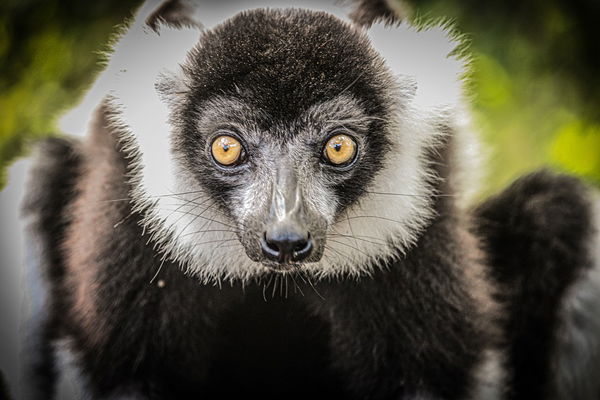
Photo: SmillaSvaneFeijen
The Indri is a large, arboreal lemur native to the forests of Madagascar. It has black and white fur, long limbs, and a small head with rounded ears. The Indri is known for its unique vocalizations, which can be heard for miles around and are often compared to the songs of humpback whales. They are folivores, primarily feeding on leaves, but will also eat fruit and flowers. The Indri is a critically endangered species due to habitat destruction and hunting, and there are estimated to be only a few thousand left in the wild.
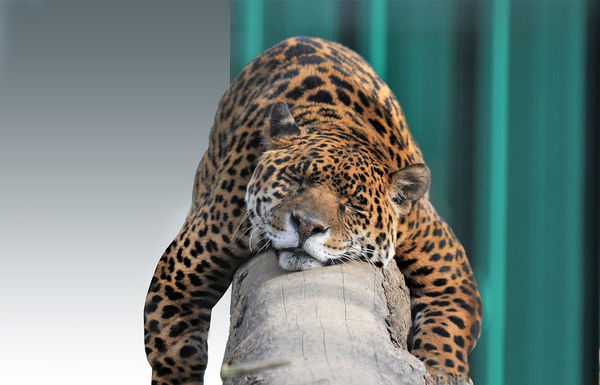
Photo: DenisDoukhan
The jaguar is a large and powerful big cat that is native to the Americas. They are known for their distinctive spotted coat, which is covered in dark rosettes. Jaguars are apex predators and are at the top of the food chain in their habitat.
Jaguars are excellent swimmers and are known to hunt a variety of prey, including fish, turtles, deer, and even caiman. They are also known for their strong bite, which allows them to crush the skulls of their prey.
Jaguars are solitary animals and are highly territorial. They mark their territory with scent markings and will defend it fiercely from other jaguars. They are also nocturnal animals and are most active at night.
Unfortunately, jaguars are threatened by habitat loss and hunting. Conservation efforts are being made to protect these magnificent animals and ensure their survival in the wild.

The kangaroo is a marsupial native to Australia and one of the most iconic animal species in that country. Its body is designed for jumping, and its hind legs are especially powerful and long. Male kangaroos can reach a height of up to two meters when standing on their hind legs and use their tails for support. Additionally, their thick, water-resistant skin helps them stay cool in Australia's hot, dry climate.
Kangaroos are herbivorous animals and feed mainly on grasses, leaves, and shoots. They are social animals and gather in groups called "troops". Female kangaroos have a pouch on their abdomen where they carry and nurse their young.
In popular culture, kangaroos are commonly associated with Australia and are considered a symbol of Australian wildlife.

Photo: holmespj
The klipspringer, also known as the saltarrocas (Oreotragus oreotragus), is a small antelope that inhabits rocky areas in Africa. It has a thick, woolly coat of gray-brown fur that allows it to blend in with its natural habitat. Klipspringers have short, sturdy legs and are able to jump long distances on rocky, rugged terrain. Both males and females have small, straight, pointed horns that they use to defend themselves against predators and fight for territory. Klipspringers are solitary and shy animals, and feed on a variety of plants and shrubs. They are able to survive in very dry and arid areas, and have developed unique adaptations to live in their rocky environment.

The koala is a small, arboreal marsupial native to Australia, known for its distinctive appearance, with fluffy ears and a round face. They are primarily herbivores, feeding on eucalyptus leaves, and are often called "koala bears" due to their teddy bear-like appearance. Koalas spend most of their lives in trees and are adapted to their arboreal lifestyle, with specialized claws and opposable thumbs to grip onto branches. They are also known for their slow metabolism and sleep up to 20 hours a day, conserving energy. Unfortunately, koalas are at risk due to habitat loss, disease, and the effects of climate change. Conservation efforts are underway to protect these beloved animals and their unique habitat.

Photo: Wikipedia
sandy-colored fur with a distinctive black stripe running down its back and a long, bushy tail. Kowaris are nocturnal and feed on insects, small mammals, and reptiles.
Kowaris are highly adapted to life in the desert, with large ears to help them locate prey and burrows to escape the heat of the day. They are also capable of conserving water by producing highly concentrated urine.
Unfortunately, the kowari is listed as a vulnerable species due to habitat loss and competition with introduced predators such as cats and foxes. Conservation efforts are focused on protecting their desert habitats and controlling invasive species.
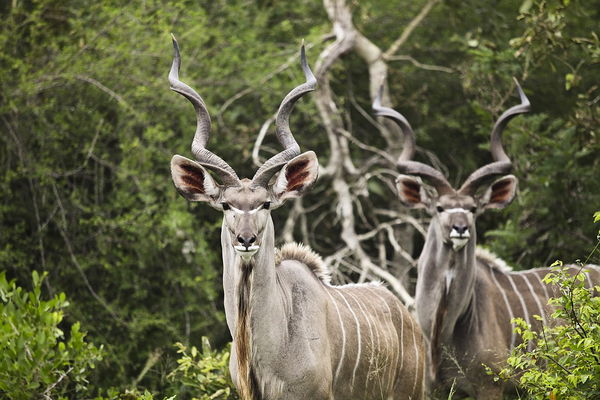
Photo: 4657743
The kudu is a large antelope found in eastern and southern Africa. It is easily recognized by its long, spiraled horns that can grow up to 6 feet long in males. Kudus have a greyish-brown coat with white stripes on their sides, and they can weigh up to 600 pounds.
Kudus are herbivores and feed on leaves, bark, and fruits of trees and shrubs. They are most active at dawn and dusk and spend the hottest part of the day resting in the shade.
Kudus are important prey for large carnivores like lions and hyenas, and they use their speed and agility to evade predators. Unfortunately, kudus are also hunted for their meat and horns, and their populations are declining in some areas.
Conservation efforts are focused on protecting kudu habitats and reducing illegal hunting. Kudus are also popular game animals and are often hunted for sport, so sustainable hunting practices are important to ensure their long-term survival.

Photo: RaKr_2
Lemurs are a group of primates that are found only on the island of Madagascar and some surrounding islands. They come in a variety of sizes and colors, ranging from the tiny mouse lemur to the larger, more well-known ring-tailed lemur.
Lemurs are known for their distinctive physical characteristics, such as their long, bushy tails and large, round eyes. They are also known for their unique vocalizations, which range from gentle chirps to loud, piercing calls.
Many species of lemurs are endangered due to habitat destruction and hunting. Conservation efforts are underway to protect their remaining forest habitats and reduce the impact of these threats.
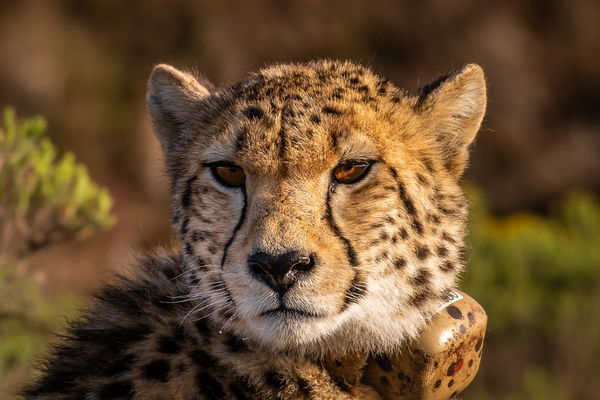
Photo: AndreasGoellner
Leopards are large and powerful cats that are native to a wide range of habitats in Africa and Asia. They are known for their striking coat, which is covered in spots or rosettes that help them blend in with their surroundings.
Leopards are skilled hunters, capable of taking down prey that is much larger than themselves. They are also known for their incredible agility and strength, able to climb trees and swim across rivers with ease.
Unfortunately, leopards are threatened by habitat loss and poaching. Their numbers have declined significantly in many areas, and they are listed as a vulnerable species by the IUCN Red List.
Efforts are underway to protect leopard populations and their habitats, including the establishment of protected areas and anti-poaching measures.

Photo: Mehmet Turgut Kirkgoz
The Liger, also known as "Lion-Tiger", is a hybrid created by crossing a lion and a tigress. This is the largest hybrid cat species and can weigh more than 400 kilos and measure more than three meters in length. Although an impressive animal, ligers are bred in captivity for tourism purposes and do not exist in the wild.
The liger combines traits from both species: it has tiger stripes on its fur and a lion-like mane. Despite their large size, ligers are known to be friendly and docile animals, making them popular in zoos and circuses.
However, the breeding of ligers and other hybrid cats is highly controversial and has been criticized by animal rights groups. Furthermore, the creation of these hybrid species can have a negative impact on the conservation of natural species, as they dilute the unique genes of lions and tigers.

Photo: InTheAir
The lion is a large, carnivorous mammal found in Africa and some parts of Asia. Known as the "king of the jungle", the lion is one of the most iconic and recognizable animals in the world.
Lions are characterized by their tawny-colored fur and muscular build, with males typically being larger than females. They are known for their distinctive manes, which are unique to male lions and serve as a way to attract females and intimidate rivals.
Lions are apex predators, feeding on a variety of prey including antelopes, zebras, and buffalo. They are social animals, living in prides consisting of multiple females, their offspring, and a few males.
Lions are threatened by habitat loss and poaching, and their populations have declined significantly in recent years. Conservation efforts are underway to protect lions and their habitats, with the goal of ensuring their survival for future generations.

Photo: ambquinn
The lynx is a medium-sized feline that inhabits North America and Europe. Its fur is reddish-brown with dark spots and a characteristic "beard" on the underside of its jaw. The lynx has short legs, a short tail, and a muscular body that allows it to move quickly and jump great distances.
The lynx is a solitary hunter and feeds mainly on small prey, such as rabbits and rodents. It can also hunt deer and other larger animals. Lynx are territorial animals and mark their territory with urine and scratches on trees.
The lynx population has declined in recent decades due to habitat loss and poaching. They are currently protected by law in many parts of the world. Conservation efforts, including reintroduction to areas where they have been extirpated, have helped increase the lynx population in some areas.

Photo: JA2020
The mandrill is a colorful primate that inhabits the rainforests of central Africa. These striking animals are easily recognizable by their distinctive blue and red facial markings, which are more pronounced in males. Mandrills are the largest species of monkey, with males weighing up to 120 pounds and standing up to 3 feet tall. They are social animals that live in large groups, or troops, and communicate with each other through a variety of vocalizations and body language. Mandrills are omnivores and feed on a variety of fruits, seeds, insects, and small animals. Unfortunately, habitat loss and hunting have caused the mandrill population to decline, and they are currently classified as vulnerable by the IUCN.

Photo: AnjaGh
The meerkat, also known as a meerkat, is a small animal belonging to the mongoose family. These creatures are native to southern Africa, where they live in social groups in the savannah and desert. Meerkats are social animals and live in groups that can have up to 40 individuals. They are highly communicative, making a wide variety of sounds, from hissing to high-pitched squeaks, to alert their group to the presence of predators.
Meerkats are small animals, measuring around 25-35 centimeters in length and weighing around one kilogram. They have a distinctive appearance, with light brown fur, dark spots around the eyes, and a long, thin tail. Meerkats are diurnal animals and spend much of the day foraging for food, mainly insects and other invertebrates.
These creatures are very popular in popular culture, and have appeared in movies and television shows as endearing and humorous characters. However, in the wild, meerkats are vulnerable animals and face threats such as poaching, habitat loss, and predation by animals such as eagles. Currently, they are protected by conservation laws in South Africa and Namibia.

Photo: Beeki
The mole is a small, burrowing mammal that is found in many parts of the world, including North America, Europe, and Asia. It has a cylindrical body with a pointed snout, short legs, and large, shovel-like paws that are adapted for digging. Moles are typically dark brown or black in color and have velvety fur that helps them move through their underground tunnels.
Moles are insectivores and feed primarily on earthworms and other soil-dwelling invertebrates. They are active year-round and are most active at night. Moles play an important role in soil health and aeration, but can also cause damage to lawns and gardens as they tunnel through the soil.
Despite their small size, moles are highly adapted to their subterranean lifestyle and have unique features such as the ability to close off their ears and nose while burrowing. They also have highly sensitive whiskers that help them navigate through their tunnels.

Photo: DerSilent
The mongoose is a small carnivorous mammal that belongs to the family Herpestidae. There are around 40 species of mongoose, found in Africa, Asia, and parts of Europe. The most famous mongoose is the Indian mongoose, which was introduced to many islands to control snake populations, including in Hawaii, where it is known as the "mongoose state." Mongooses are known for their agility and are able to run and jump quickly. They have long, sleek bodies, pointed noses, and short legs. They are omnivorous and feed on a variety of animals and plants, including insects, rodents, snakes, eggs, and fruits. Many species of mongoose are threatened by habitat loss and hunting, but some, like the Indian mongoose, have become invasive in certain areas.

The moose, also known as the "king of the forest," is the largest member of the deer family. It is a native animal of North America and Northern Europe, and can be found in a variety of habitats, from forests to swamps and tundras. Moose are herbivores and feed on leaves, buds, bark, and branches of trees.
In terms of appearance, moose have a bulky body with long, slender legs and a long neck. Males have large antlers that can reach up to two meters wide and are used to attract females and fight against other males during mating season. Moose also have a thick, brown fur that helps them survive in cold climates.
Moose are imposing and majestic animals that have been objects of admiration for centuries. They are important in the culture of indigenous peoples and their hunting has been a source of food and materials for many communities. In summary, the moose is an iconic and fascinating animal that is a symbol of wildlife in North America and Northern Europe.

Photo: JonathanRieder
The mouse is a small rodent that is found throughout much of the world. It has a small, slender body, large ears, and a long, thin tail. Mice are known for being quick and agile, and are capable of scaling vertical surfaces with ease. They are omnivores and feed on a variety of foods, including grains, fruits, insects, and small animals.

Photo: Tim Evanson
The naked mole-rat is a small, hairless rodent that lives in underground burrows in East Africa. Despite their unusual appearance, naked mole-rats are fascinating creatures that have evolved unique traits to survive in their subterranean habitat. They have a complex social structure with a queen, breeding males, and non-breeding workers that perform various tasks, such as digging tunnels, foraging for food, and caring for the young. Naked mole-rats also have remarkable resistance to cancer and can live up to 30 years, which is unusually long for a rodent. They are also able to tolerate low oxygen levels and can survive without food or water for extended periods of time.
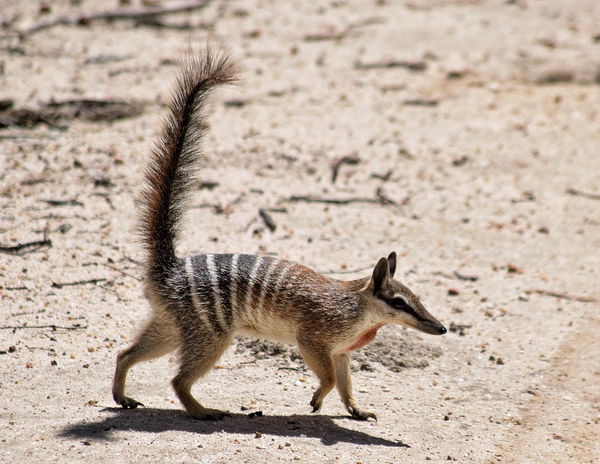
Photo: TerriAnneAllen
The numbat is a small, diurnal marsupial found only in Western Australia. It is known for its unique and striking appearance, with a reddish-brown coat marked by distinctive white stripes across its back and a long, thin snout.
Numbats are primarily insectivorous, feeding primarily on termites which they locate with their acute sense of smell. They are solitary animals, except during breeding season when males and females may form temporary pairs.
Once widespread throughout much of southern Australia, the numbat is now critically endangered due to habitat loss and fragmentation, as well as predation by introduced species such as foxes and cats. Conservation efforts are underway to protect remaining populations and restore degraded habitats.

Photo: IanZA
The nyala is a medium-sized antelope found in southern Africa. Both males and females have shaggy coats of reddish-brown with white stripes on the torso and legs. Males have distinctive spiral horns that can reach up to 80 cm in length, while females have shorter, straighter horns or none at all.
Nyala are primarily browsers, feeding on leaves, shoots, and fruits of various plants. They are mostly active during the early morning and late afternoon, and can often be found near water sources.
Despite being hunted for their meat and skins, the nyala is considered a species of least concern by the IUCN due to its large and stable populations across its range. However, habitat loss and fragmentation remain a threat to local populations in some areas.

Photo: LucasFZ70
The ocelot is a small wild cat found in Central and South America, as well as some parts of Texas in the United States. It has a distinctive coat of fur with black spots and stripes on a tawny or reddish-brown background. The ocelot is a skilled hunter, able to climb trees and swim well, and it preys on a variety of animals such as rodents, birds, and reptiles. Due to habitat loss and hunting for its fur, the ocelot is listed as a vulnerable species by the IUCN. Conservation efforts are in place to protect its remaining populations.

Photo: mbc-2016
The okapi is a rare and elusive mammal that is native to the dense rainforests of the Democratic Republic of Congo in Central Africa. Its most distinctive features are its long neck, striped legs, and reddish-brown coat. The okapi is a relative of the giraffe and has a similar long tongue that it uses to reach leaves and buds on trees. Despite its unique appearance, the okapi was not known to science until the early 20th century. Today, the species is classified as endangered due to habitat loss and poaching. Conservation efforts are being made to protect remaining populations in protected areas and zoos around the world.

Photo: Scottslm
The opossum, also known as the possum, is a marsupial native to the Americas. They have a distinctive appearance with a pointed snout, grayish fur, and a long, hairless prehensile tail that they use for climbing and grasping. Opossums are nocturnal and omnivorous, feeding on insects, fruits, and small animals. They have a unique adaptation called "playing possum" where they feign death by collapsing, releasing a foul odor, and becoming rigid, as a defense mechanism against predators. They are solitary animals, except during mating season and when raising young. Opossums have a short gestation period and give birth to underdeveloped young that continue to develop in their mother's pouch.

Photo: ShekuSheriff
The orangutan is a large arboreal ape native to Indonesia and Malaysia. They are one of the closest relatives to humans, sharing over 97% of the same DNA. Orangutans have reddish-brown hair, long arms, and a bulky body. They are highly intelligent and have been observed using tools in the wild. Sadly, these magnificent creatures are critically endangered due to habitat loss, poaching, and the illegal pet trade. The destruction of their forest habitat for palm oil plantations is the greatest threat to their survival. Conservation efforts are underway to protect their remaining habitats and prevent their extinction.

Photo: onefox
The oryx (Oryx gazella) is a medium-sized antelope that inhabits arid and semi-arid regions of Africa, from Mauritania to Sudan and Ethiopia. The oryx is easily recognizable by its black and white fur and long, straight horns. These animals have adapted to living in extremely dry conditions, which allows them to survive without water for long periods of time. Furthermore, their diet consists mainly of leaves and branches, which allows them to survive in areas where vegetation is sparse.
The oryx has been hunted for its meat and horns, leading to declines in its populations in some areas. However, in other places conservation and captive breeding programs have been established that have helped increase the population of these antelopes. The oryx is a symbolic animal in many African cultures and has been depicted in art and literature for centuries.
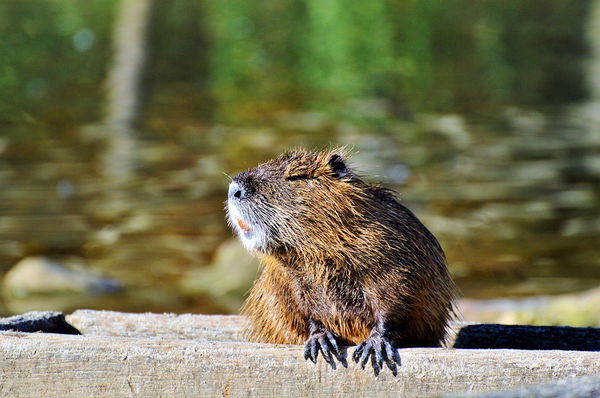
Photo: Pexels
The otter is a semi-aquatic mammal found in rivers, lakes, and coastal areas around the world. They are known for their playful behavior, and are often seen swimming and playing in the water. Otters have a sleek, streamlined body and webbed feet that make them excellent swimmers. They also have a thick, waterproof fur that keeps them warm in cold water. Otters are carnivorous, and their diet consists mainly of fish and shellfish. They are important predators in aquatic ecosystems, and help to maintain the health of fish populations. However, many otter species are threatened by habitat loss, pollution, and overfishing.

The pig is a domestic animal widely raised for its meat, skin, and fat. These animals are omnivores and feed on a wide variety of foods, including grains, herbs, and fruits. Additionally, pigs are social animals and exhibit complex behaviors in their herd life.
Pigs have thick skin and hair that helps protect them from insects and the sun. Additionally, their skin and fat are used in the production of products such as soap and candles. In the kitchen, pork is consumed in many parts of the world and is used in a wide variety of dishes.
In popular culture, pigs are often associated with dirtiness and laziness, but in reality, they are intelligent and social animals.

Photo: pen_ash
The platypus is a semi-aquatic animal native to eastern Australia and Tasmania. It is known for its unusual appearance, with a duck bill, an otter-like body, and beaver-like legs and tail. It is one of the few mammals that lays eggs, rather than giving birth to live young.
Platypuses feed mainly on aquatic invertebrates and small fish. They are excellent swimmers and can stay underwater for extended periods thanks to their ability to store oxygen in their skin and fur. They are solitary and nocturnal, and often dig burrows on the banks of rivers and streams.
The platypus is a protected animal due to its rarity and vulnerability. Although not currently considered endangered, water pollution and habitat destruction remain threats to their survival.
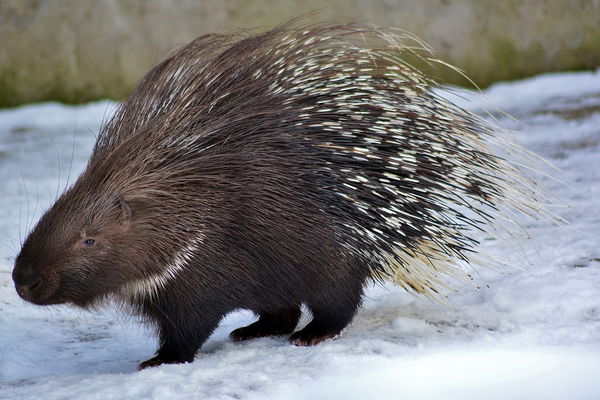
Photo: jggrz
The porcupine is a large rodent found in many parts of the world. They are covered in sharp quills that protect them from predators. Porcupines are primarily nocturnal and are herbivores, feeding on a variety of plants and tree bark. They are also skilled climbers and can often be found in trees or on rocky outcroppings. Porcupines are generally solitary animals, although they may congregate in areas with abundant food sources. They are also known for their unique mating habits, which involve loud vocalizations and aggressive behavior. Porcupine populations are generally stable, although they have been threatened by habitat loss and hunting in some areas.
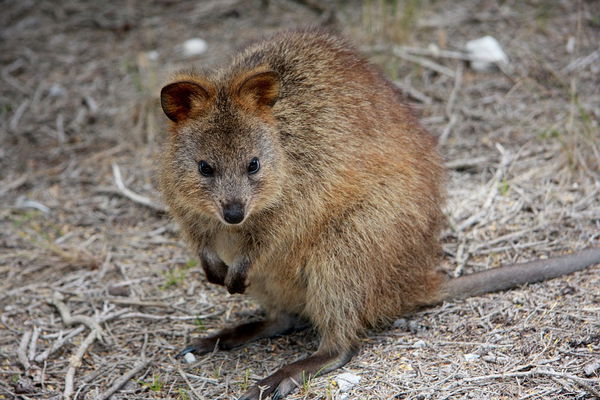
Photo: Holgi
The quokka is a small marsupial that is native to Western Australia, particularly on Rottnest Island and nearby smaller islands. They are known for their friendly and curious behavior, making them a popular attraction for tourists. Quokkas have a stocky build, short legs, and a round face with a short snout. They have brown fur with lighter underparts and a small pouch for their young.
Quokkas are primarily herbivorous, feeding on a variety of plants, including leaves, bark, and grasses. They are also known to eat small insects and invertebrates. Quokkas are social animals and are often found in groups, although they are most active at night.
Quokkas are considered a vulnerable species due to habitat loss and predation by introduced predators such as foxes and cats. Efforts are underway to protect their populations and their natural habitats.

Photo: Kevin Jump
The rabbit is a small, furry mammal known for its long ears and hopping gait. They are found throughout the world and come in a wide variety of breeds and colors. Rabbits are herbivores, feeding on grasses, hay, and vegetables, and they are known for their ability to reproduce quickly. They are social animals and live in groups called colonies, which can include dozens of rabbits. Rabbits are also popular as pets, and they are often kept in cages or hutches in people's homes. They are known for their docile and friendly nature, and they can form strong bonds with their human caretakers. However, rabbits can also be a pest in some areas, damaging crops and gardens. Overall, rabbits are a beloved animal and have played an important role in many cultures and ecosystems.

Photo: Alexas_Fotos
The raccoon is a medium-sized mammal native to North America. It is known for its distinctive black mask around its eyes and its ringed tail. Raccoons are omnivorous and opportunistic, feeding on a variety of foods including insects, fruits, nuts, and small animals. They are also known for their adaptability and can thrive in both urban and rural environments. Raccoons are known for their intelligence and have been observed using tools and solving problems. They are also nocturnal animals, active mostly at night. While they can be considered pests due to their tendency to raid trash cans and gardens, raccoons are also valued for their fur and are sometimes kept as pets.
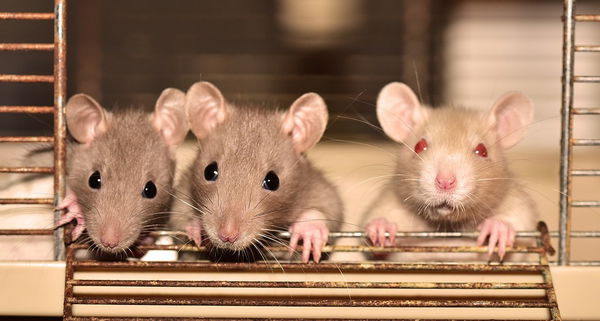
Photo: sipa
The rat is a rodent that belongs to the family Muridae. It is a very adaptable species and is found all over the world, with the exception of Antarctica. There are over 60 different species of rats, ranging in size from the common rat to the giant bamboo rat. The rat's body is generally large and robust, with a big head and small eyes. Its ears are small and rounded, and its tail is long and scaly. Rats are known for being agile and can easily climb vertical surfaces. They are omnivores and feed on a variety of foods, including grains, fruits, meat, and waste. Rats are social animals and group together in colonies, and can be carriers of diseases if not properly controlled.

Photo: Pexels
The red panda, also known as the lesser panda, is a small mammal native to the eastern Himalayas and southwestern China. Despite its name, it is not closely related to the giant panda. Red pandas are primarily arboreal, meaning they spend most of their time in trees. They are active at night and feed on bamboo, as well as fruits, berries, and small animals. Red pandas are known for their distinctive appearance, with reddish-brown fur, a bushy tail, and white facial markings. They are also an endangered species due to habitat loss and poaching.
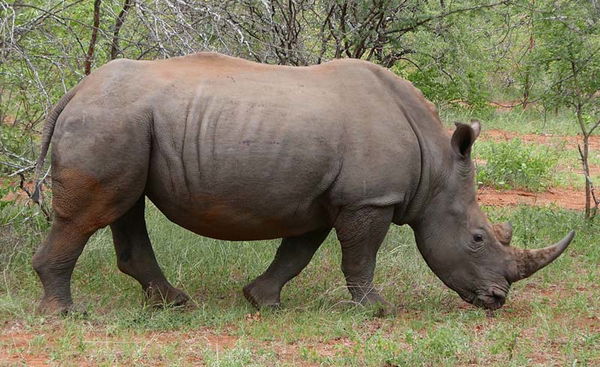
The rhinoceros, or rhino, is a large, powerful mammal known for its distinctive horns and tough, armored skin. There are five species of rhinos found in Africa and Asia, and all are at risk due to poaching and habitat loss. Rhinos are herbivores, feeding on a variety of vegetation, and are primarily solitary animals. They are known for their excellent sense of smell and hearing, and their charging ability, which is used for self-defense. Rhinos are also important for their role in their ecosystems, as they help to maintain the balance of plant and animal life. Unfortunately, rhinos are at risk due to poaching for their horns, which are believed to have medicinal properties and are also sought after as a status symbol. Conservation efforts are underway to protect these magnificent animals and their habitats.
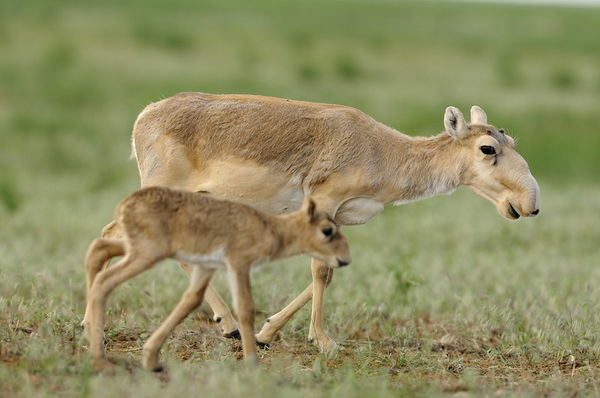
Photo: Flickr
The saiga (Saiga tatarica) is a species of antelope that inhabits the steppes of Eurasia, from Russia to Mongolia. It is characterized by its protruding nose, which serves to warm the cold and dry air before it reaches its lungs, thus avoiding dehydration. The saiga has a stocky body and thick, light brown fur. They can be up to 80 cm tall and weigh up to 70 kg. Their diet consists of herbs, flowers, and shrubs.
Unfortunately, the saiga has been the victim of poaching and the loss of its natural habitat, which has led to a drastic decline in its population. In 2015, an infectious disease in Kazakhstan's saiga populations killed more than 60% of the animals in a matter of days, further exacerbating their critical conservation status.
The saiga is an important animal in the ecology of its habitat, as it helps maintain the balance of steppe ecosystems and is a source of food for predators in the area. Currently, conservation efforts are underway to protect the saiga and its natural habitat.

Photo: bodsa
The seal is a marine mammal that belongs to the phocid family. There are several species of seals that are distributed throughout the world, from the cold waters of the Arctic to the temperate waters of the Pacific and the Atlantic. Seals have a stout, fusiform body that is adapted for swimming and diving in the water. Their skin is covered in a dense layer of hair that helps them keep warm in cold environments. Seals feed mainly on fish and other marine animals.
Seals are highly social animals and are often found in large colonies on land during the breeding and pup season. Female seals nurse their pups for several weeks before the pups learn to swim and hunt on their own. Seals are important to the marine ecosystem, as they help regulate the population of fish and other marine animals.
Despite their importance, many seal species are threatened with extinction due to overhunting, pollution, and habitat degradation. Conservation efforts are underway to

Photo: Cifer88
The serval, also known as the African wild cat, is a medium-sized feline that inhabits the savannas and forested areas of southern and eastern Africa. It is characterized by its golden-yellow spotted fur with black stripes, long legs, and pointed ears with white markings on the back. Males are slightly larger than females and can weigh up to 18 kg, while females weigh between 7 and 12 kg.
Servals are solitary, nocturnal animals that feed mainly on small mammals such as rodents, hares, and birds. They use their excellent hearing and visual acuity to spot prey in tall grass and leap into the air to capture it with their sharp talons.
Although their population is not considered endangered, servals face threats such as habitat loss due to agricultural expansion and poaching. In some regions, they are also hunted for their skin and meat. In addition, the trade in servals as exotic companion animals also represents a threat to their conservation.
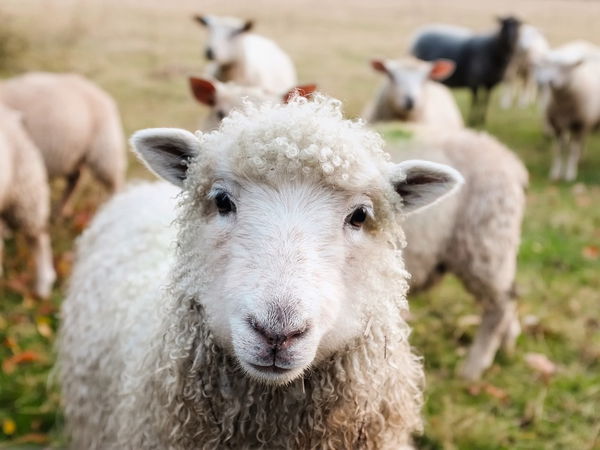
Photo: 12019
The sheep, also known as the ram, is a herbivorous animal that belongs to the Bovidae family. They are domestic animals that are raised mainly for their wool, meat and milk. There are more than 200 breeds of sheep worldwide, each with unique characteristics in terms of size, color, texture, and wool quality.
Sheep are social animals and prefer to live in groups. They are highly intelligent animals and can recognize other members of their herd and family. They are very prolific animals and can have several offspring a year.
Sheep wool is highly valued in the textile industry due to its softness and warmth. Additionally, sheep meat is an important source of protein for many cultures around the world. Sheep are also used in animal therapies to help people with physical and mental disabilities improve their quality of life.

Photo: 7854
The shrew is a small, insectivorous mammal found throughout the world in a wide range of habitats, from forests and grasslands to deserts and wetlands. Shrews have a long, pointed snout and tiny eyes, and are characterized by their high metabolism and voracious appetite. They have to eat constantly to maintain their energy levels, consuming up to three times their body weight in food each day. Despite their small size, shrews are ferocious predators that use their sharp teeth and strong jaws to catch and consume a variety of prey, including insects, spiders, and small vertebrates.

Photo: CountryGirl1
The skunk is a small, black and white mammal native to North and South America. They are best known for their strong, unpleasant odor that they release when threatened or in danger. Skunks are omnivores and eat a variety of foods including insects, small mammals, and plants. They are also known for their digging abilities, using their strong claws to burrow dens and search for food. Skunks are mainly active at night and have poor eyesight, relying on their sense of smell and hearing to navigate their surroundings. While they are often viewed as a nuisance due to their odor, skunks are also valued for their role in controlling insect populations.

The squirrel is a small rodent that inhabits trees and shrubs around the world, except for in Australia. They are known for their ability to jump from branch to branch with ease and their habit of storing food in tree tops. Squirrels feed on a wide variety of foods, including nuts, seeds, fruits, and insects. Additionally, their constant activity and habit of chewing on twigs and branches make them important contributors to seed dispersal in forests. Squirrels are also important prey for predatory animals like hawks, eagles, and snakes.

Photo: andyround62
The sugar glider, also known as the lesser flying squirrel, is a small marsupial native to Australia and New Guinea. It is named for its ability to glide through the air, using a flap of skin between its front and back legs to glide up to 50 meters in a single leap. Sugar gliders are nocturnal and arboreal, spending most of their time in trees. They are social animals and often live in groups of up to 7 individuals. Their diet consists of nectar, pollen, insects, and small animals. Sugar gliders are popular as pets, but require specialized care and attention.

Photo: Dimhou
The takin is a large, muscular mammal that inhabits the mountainous regions of China, Bhutan, and Myanmar. Also known as the "goat-antelope," it has a unique appearance that combines features of both goats and antelopes.
Takins have a stocky build with a thick, shaggy coat that can range in color from light brown to dark black. They have short, curved horns that are present in both males and females, and a large, broad head with a pronounced snout.
Despite their large size and impressive horns, takins are herbivores that primarily feed on grasses, leaves, and shrubs. They are well adapted to their mountainous habitat, with strong legs and hooves that allow them to navigate steep and rocky terrain.
Takins are a popular species in zoos and wildlife parks, and are considered a national symbol in Bhutan. However, their populations in the wild are threatened by habitat loss and hunting, and they are listed as a vulnerable species by the International Union for Conservation of Nature (IUCN).

Photo: Eelffica
The tapir is a large, herbivorous mammal that is native to Central and South America, as well as parts of Southeast Asia. They have a distinctive appearance, with a short, stocky body, a trunk-like nose called a proboscis, and a thick, leathery hide that is usually dark brown or gray in color.
Tapirs are excellent swimmers and have been known to dive deep underwater to evade predators. They are also important seed dispersers, consuming large quantities of fruit and excreting the seeds over wide areas.
Despite their size, tapirs are relatively shy and elusive animals. They are threatened by habitat loss and hunting, and several species are listed as endangered by the International Union for Conservation of Nature (IUCN).

Photo: Pixabay
The Tasmanian devil is a carnivorous marsupial that is native to the island of Tasmania, Australia. They are small, stocky animals that have a powerful bite and a reputation for ferocity.
Tasmanian devils are nocturnal and primarily eat carrion, but they also hunt small prey such as birds, reptiles, and insects. They are known for their loud and aggressive vocalizations, which they use to communicate with each other.
In recent years, Tasmanian devils have been threatened by a contagious cancer called devil facial tumor disease (DFTD), which has decimated their populations. Conservation efforts are being made to save the species, including breeding programs and research into a vaccine for DFTD.

Photo: Ondrej Prosicky
The tayra, also known as the Eira or bush dog, is a medium-sized mammal found in the tropical forests of Central and South America. They have a long, slender body and a bushy tail, with brown or black fur. Tayras are excellent climbers and can move quickly both on the ground and in trees. They are omnivores, eating a variety of prey including small mammals, birds, fruit, and insects. Tayras are also known for their ability to hunt venomous snakes, using their agility and thick fur to protect themselves from bites. They are solitary animals and are primarily active during the day. The tayra population is currently stable, although they are threatened by habitat loss and hunting in some areas.

Photo: Neil Turner
The tiger is a large, majestic cat native to Asia, known for its distinctive orange coat with black stripes. They are apex predators, and are known for their strength, agility, and hunting prowess. Tigers are solitary animals that typically hunt at night, feeding on a variety of prey including deer, wild boar, and other large mammals. Unfortunately, tigers are at risk due to poaching for their bones, skin, and other body parts, which are sought after for use in traditional medicines and as status symbols. Habitat loss and fragmentation are also significant threats to tiger populations. Conservation efforts are underway to protect these magnificent animals and their habitats.

Photo: Ondrej Prosicky
The Urial, also known as the Arkars or Shapo, is a wild sheep species found in Central Asia, primarily in the mountainous regions of Pakistan, Afghanistan, India, and Tajikistan. They are typically found in high altitudes of up to 16,000 feet, inhabiting grassy slopes, rocky terrain, and alpine meadows.
Urials are well adapted to their mountainous habitats and are excellent climbers, with sharp hooves and long, curved horns that can reach up to 1 meter in length. They have a reddish-brown coat that fades to a lighter color on their undersides, and both males and females have horns, although those of males are larger.
Urials are herbivorous and feed on a variety of grasses, herbs, and leaves. They are also an important prey species for predators such as wolves and snow leopards.
While the Urial is currently classified as "Least Concern" by the IUCN, its populations are threatened by habitat loss, hunting, and competition for resources with domestic livestock.

Photo: Alexas_Fotos
The wild boar, also known as the wild pig or boar, is a large and powerful mammal that is native to parts of Europe, Asia, and North Africa. They are known for their distinctive tusks, which can be dangerous when they feel threatened.
Wild boars are omnivorous and feed on a variety of foods, including roots, fruits, insects, and small mammals. They are also known to be opportunistic feeders and will scavenge for food when necessary.
Wild boars have a social hierarchy and live in groups called sounders. These groups are led by dominant females and consist of males, females, and their offspring. They are active mainly at night and spend their days resting in dens or wallows.
In some cultures, the wild boar is considered a symbol of strength, courage, and ferocity. They are also hunted for their meat and their tusks, which are used for decoration.

The whale is a large marine mammal that is known for its size, intelligence, and unique vocalizations. There are many different species of whales, ranging in size from the small porpoise to the massive blue whale, which is the largest animal on Earth. Whales are adapted to life in the water, with streamlined bodies, blubber to keep them warm, and the ability to hold their breath for long periods of time. They are social animals, living in groups called pods, and they communicate with each other using a range of vocalizations, including songs that can be heard for miles. Whales are also important for their role in the ocean ecosystem, helping to maintain the balance of marine life by feeding on krill and other small creatures. However, many species of whales are endangered due to hunting, pollution, and other factors.

Photo: raincarnation40
The wolf, also known as Canis lupus, is a mammalian animal belonging to the Canidae family. It is a predator that inhabits forests, tundras, grasslands, and mountains in Europe, North America, and Asia. Wolves are social animals and live in groups called packs, which can have up to 30 members.
Wolves are known for their thick, fluffy fur, which can range in color from dark gray to white. Their senses of smell, hearing, and sight are highly developed, allowing them to detect prey and danger in their environment.
Although wolves have been hunted by humans for centuries due to their reputation as dangerous predators, conservation efforts have helped boost populations in some areas. However, wolves still face threats such as poaching, habitat loss, and competition with humans for resources such as food and water.

Photo: pen_ash
The wombat is a marsupial that is native to Australia. They are known for their stocky build, short legs, and powerful claws, which make them excellent diggers. Wombats are herbivores that feed on grasses, roots, and bark, and they have a slow metabolism that allows them to conserve energy.
Wombats are solitary animals that are most active at night. They live in burrows that they dig themselves, and they are known for their strong territorial behavior. Wombats are also famous for their ability to produce cube-shaped droppings, which is a unique adaptation that helps them mark their territory more effectively.
Wombats are threatened by habitat loss, vehicle collisions, and disease, and several species are listed as vulnerable or endangered by the International Union for Conservation of Nature (IUCN). They are also occasionally kept as pets, although this is illegal in many places.

Photo: Simon
The yak is a large, shaggy-haired bovine native to the Himalayan region of Central Asia. They are well-adapted to living in high altitudes and cold climates, with their thick fur and large lungs allowing them to thrive in these harsh conditions. Yaks are often used for their milk, meat, and hides, as well as for transportation and plowing fields. They are also highly revered in Tibetan and Buddhist cultures, often being seen as symbols of strength, stamina, and spiritual purity.

Photo: Megan Coughlin
The zebra is a distinctive African mammal known for its black and white stripes. They are closely related to horses and have a similar body shape, but their striped coat sets them apart. There are three different species of zebra, each with a slightly different stripe pattern. Zebras are social animals that live in groups called herds, and they communicate with each other through a range of vocalizations and body language. They are herbivores, feeding on grasses and other vegetation, and they have adapted to life on the African savannah, with sharp eyesight and quick reflexes to avoid predators. Zebras are also known for their unique behavior of standing close together and grooming each other, which helps to maintain social bonds and prevent insects from bothering them. They are a beloved animal of the African plains and are a popular attraction for tourists on safari.
